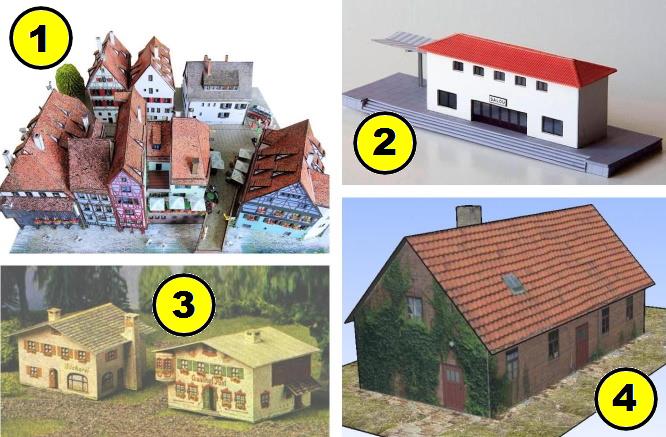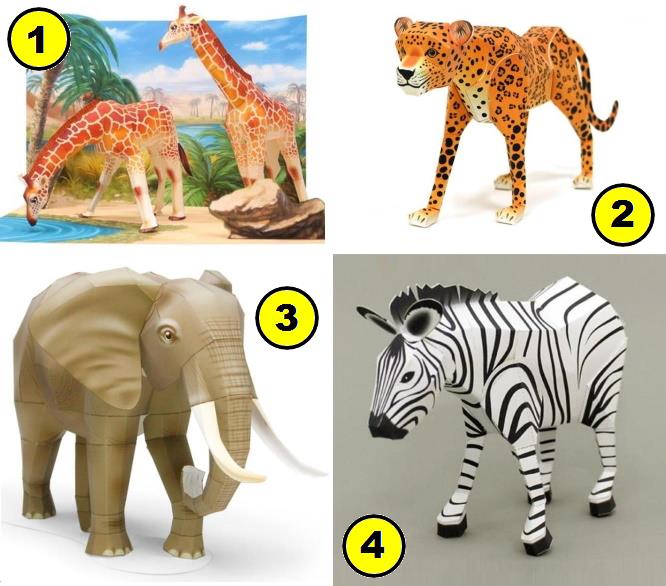Composed of 286 pieces divided into 12 sheets, this 1/160 scale (N scale) paper model of the Blauflesch Building as it appeared in the 1950s is offered by the Ausschneide Bogen website, from Germany.
The Blauflesch Building was completed in 1902 with several towers, decorative gables and bay windows.
During an air raid on December 17, 1944, like much of the city of Ulm, it was badly damaged and no longer had a roof.
After the end of the Second World War, it was rebuilt in a somewhat simpler form with the Blauflesch restaurant, a consumer shop and the Elisabethen pharmacy (named after the church opposite).
The Blauflesch building shown in the model as it appeared in the 1950s was intuitively created from a black and white photo from the time, the ground floor plan and images of its current state.
The Blauflesch restaurant has been the regular meeting place for Ulm's paper model makers for years and we hope it will continue to be so after the new contract.
This papercraft includes a small model of a three-wheeled Maggi delivery van, also from the 1950s. An advertising column featuring advertising from the same era takes you back to the beginning of the economic boom after the Second World War.
In the world of model making, the N scale (1/160) is one of the most popular scales in the model railroad hobby, which consists of building and operating model trains.
N scale has a reduction factor of 1/160, which means that every centimeter on the model represents 160 centimeters in real life.
This results in relatively small models, allowing you to create detailed models in compact spaces.
One of the main advantages of N scale is its ability to represent realistic scenes in a reduced space.
Because it is smaller than other scales, it is possible to build complex and detailed railway models even in limited areas.
Again I say thanks to my friend Jo Kizinger, from USA, for this nice find.
Composto de 286 peças divididas em 12 folhas, este modelo de papel na escala 1/160 (escala N) do Edifício Blauflesch tal qual ele era na década de 1950 é oferecido pelo site Ausschneide Bogen, da Alemanha.
O Edifício Blauflesch foi concluído em 1902 com várias torres, empenas decorativas e janelas salientes.
Durante um ataque aéreo em 17 de dezembro de 1944, como grande parte da cidade de Ulm, ela foi gravemente danificada e não tinha mais telhado.
Após o fim da Segunda Guerra Mundial, foi reconstruída de forma um pouco mais simples com o restaurante Blauflesch, uma loja de consumo e a farmácia Elisabethen (em homenagem à igreja em frente).
O edifício Blauflesch mostrado na maquete como ele era na década de 1950 foi criado intuitivamente a partir de uma foto em preto e branco da época, da planta do térreo e de imagens de seu estado atual.
O restaurante Blauflesch foi durante anos o ponto de encontro regular dos fabricantes de modelos de papel de Ulm e esperamos que continue a sê-lo após o novo contrato.
Este papercraft inclui um pequeno modelo de uma van de entrega Maggi de três rodas, também da década de 1950.
Uma coluna publicitária com publicidade da mesma época leva você de volta ao início do boom econômico após a Segunda Guerra Mundial.
No mundo do modelismo, a escala N (1/160) é uma das escalas mais populares no hobby do ferromodelismo, que consiste em construir e operar maquetes de trens.
A escala N possui um fator de redução de 1/160, o que significa que cada centímetro no modelo representa 160 centímetros na vida real.
Isso resulta em modelos relativamente pequenos, permitindo a criação de maquetes detalhadas em espaços compactos.
Uma das principais vantagens da escala N é a sua capacidade de representar cenas realistas em um espaço reduzido.
Por ser menor que outras escalas, é possível construir maquetes ferroviárias complexas e detalhadas mesmo em áreas limitadas.
Novamente eu agradeço ao meu amigo Jo Kizinger, dos EUA, por mais este belo achado.






























